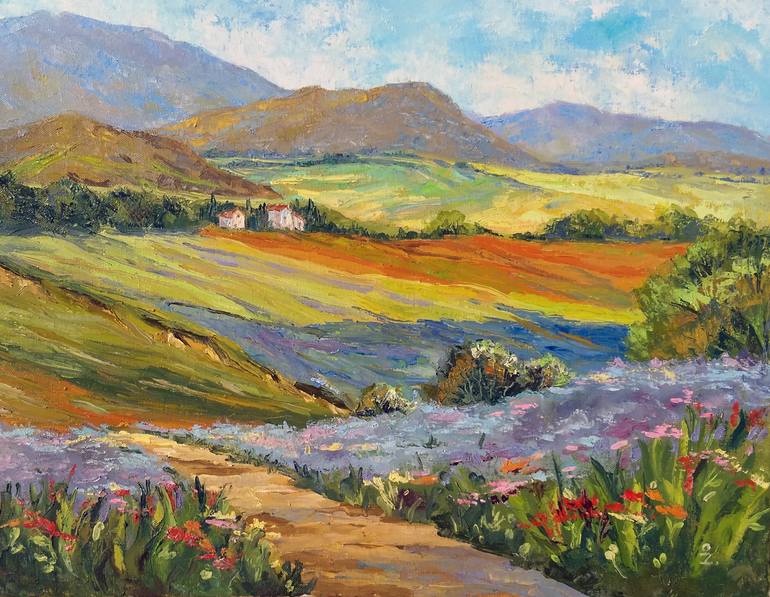Of course the names and dates recall the Windrush generation, the Spanish Civil War and the treatment of Jews leading up to WWII. Meanwhile, there are themes of unrequited love, parent-child relationships, and the difficulties of creative women wanting their art to be taken seriously. Lots of people are manipulating each other and hiding secrets in order to score points. It all becomes somewhat messy and incoherent as the author tries to pack too much detail into her story (there is a bibliography at the back to prove she has done her research) and it doesn’t tie together very well. Although the descriptive passages are fantastically evocative, the characters are all one-dimensional and the story itself is unengaging and predictable. In both stories there is a sense of dislocation, privilege and misunderstanding, the notion of shared responsibility and mutual history, and overwhelmingly, the dangerous man trope.
 |
| Spanish landscape by Olga Zaitseva |
Olive paints pictures
and asks Isaac to take the credit for it, aware that her art-dealing father
won’t admire it if he knows the true artist. When Isaac protests she should own
the paintings, she rejoinders, “Do you know how many artists my father sells?
Twenty-six last time I counted. Do you know how many of them are women, Isaac?
None. Not one. Women can’t do it, you
see. They haven’t got the vision, although
last time I checked they had eyes, and hands, and hearts and souls. I’d have
lost before I even had a chance.” Of course, this is the provenance of the
painting that falls into Lawrie’s hands – there is no mystery to this novel.
Olive argues, “They believe it’s Isaac’s painting, and that’s all that matters
isn’t it? What people believe. It doesn’t matter what’s the truth; what people
believe becomes the truth.”

No comments:
Post a Comment